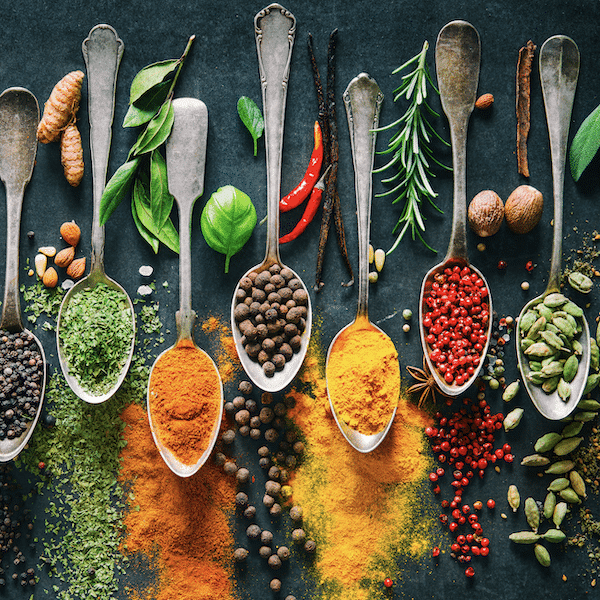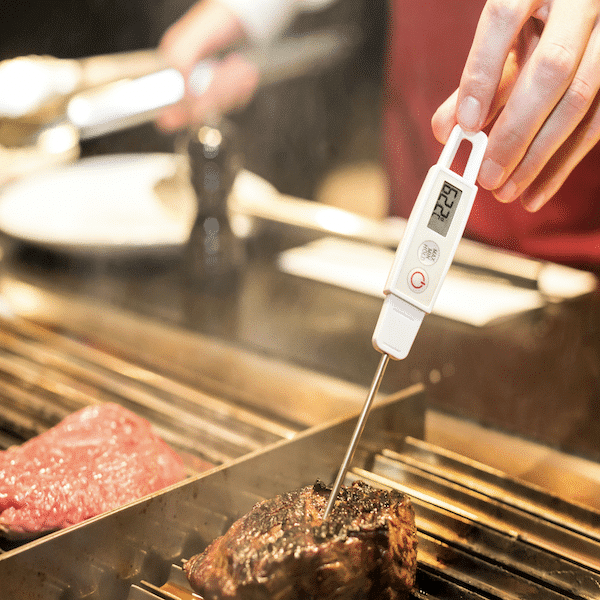Tips For Cooking A Perfect Steak Like A Pro Chef
The Perfect Steak
Cooking steaks is a weekend & holiday favorite across the US. But here in Western New York with just a few short months of perfect grilling season, it’s important to nail the perfect steak every time you cook this American icon of summer awesomeness.

1. Start with high-quality meat.
If you have read some of my other blogs or emails you will sense a reoccurring theme here. Choosing the most high-quality meat is imperative no matter what protein you are preparing. But I believe personally that the steak is the most critical. That doesn’t mean you have to spend a fortune on USDA prime.
Look for good marbling and fat distribution in your steak, and half the battle will be over.

2. To Season or Not To Season?
Your favorite seasoning salt or rub may be perfect for pork, chicken or burgers on the grill but when it comes to steaks, there are two distinctly different and separate schools of thought when seasoning. Depending on the technique and type of steak I’m cooking, I will sometimes use a blended seasoning mix with black pepper, salt, crushed red pepper and caraway seeds.
However, if I’m cooking up a 60-day dry-aged rib eye, I won’t season it at all until the very end and then only with salt. Why? It all depends on the flavor profile of the beef. Dry-aged beef has very complex flavor notes that could easily get blown out with too much pepper or spice.
Something like a hanger steak or flat iron can take a lot of seasoning especially if being sliced for fajita or tacos.
The important thing to consider is the flavor profile of the beef and how much of it you want to taste on the plate. Adjust seasonings accordingly.

3. Charcoal grill, wood fire, reverse sear, broiled, pan sear or sous vide?
Arguably, there are many methods to cook the perfect steak – I will share several tips for each method.
- On a charcoal or wood-fired grill – The number one secret is to make sure your grill is as hot as possible. Do not skimp on wood or charcoal. You want to start by searing off the outside of the steak to form a crust, then slow the cooking process down to seal in the juices.
- Reverse searing – Start by baking the steak in the oven until the internal temperature reaches 125° (for medium rare). Then, take your very ugly steak out of the oven and sear it over a hot fire or in a cast-iron pan to finish. This is known as the poor man’s sous vide but works extremely well.
- In a pinch you can always broil a steak in your oven. Put the steak on a grate up close to the broiler, set to the highest temperature possible. Sear off both sides. Not my absolute favorite. But if it’s raining sideways I won’t let that stop me from eating steak.
- Pan-seared is a very traditional way to cook a steak. Heat a cast-iron pan almost to the smoke point and add a small amount of oil, butter, garlic and thyme to the pan. Place the steak in the pan, sear off the outside and baste with the butter, garlic and thyme. This creates wonderful flavor but can take a little practice to get it right.
- Sous vide is one of my personal favorite methods for cooking steaks. Especially expensive ones. Why? Sous vide minimizes the chance that it will come out wrong. Sous vide requires a special piece of equipment that you can buy online, which involves heating the steak in a water bath inside of a vacuum seal bag to 125° (similar to reverse sear). You’ll end up with a very ugly steak, but this is where you can sear it off on a very hot grill or in a cast-iron pan to create the crust. Controlling the internal temperature ensures perfect results every time, regardless of the thickness of your steak.

4. Let your steak rest for at least 10 minutes
Let your steak rest for at least 10 minutes before you slice and serve. No matter what cooking method you use, this is the number one, most important thing to do. If you slice your steak as soon as it comes off the grill and do not let it rest it will bleed out, losing its flavor and moisture.
The important thing to consider is the flavor profile of the beef and how much of it you want to taste on the plate. Adjust seasonings accordingly.

5. Use a digital thermometer to test your temperature.
Another reoccurring tip for meat. I’ve been cooking professionally for 40 years and I do not cook a piece of meat without a digital thermometer in my hand. Do not use the inside of your arm or the fat part of your thumb to check for the right texture when cooking your expensive steak. The steak may cost you upwards of $50-$60. Spent $20 on a digital thermometer and nail the cooking temperature perfectly every time.

I went through these techniques fairly quickly and without a tremendous amount of detail. I have other blog articles specifically on sous-vide which drills down the technique in further detail.
If I could only pick one tip to share, one that’s the single most important thing to do when cooking a steak, it may not be what you would expect.
For me, it’s having a digital thermometer. Having the most expensive pan to cook in, the best knife to slice the beef, and the most expensive shaved finishing salt will not fix an over- or under-cooked steak.
Hope this information helps.
Have an awesome week!
Binks

